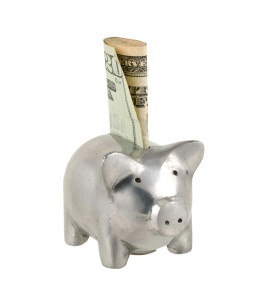
If you are a small business owner looking to create an investment program for yourself and your employees, a Keogh Plan may be a good option. Keogh Plans were invented by Eugene Keogh in the 1960's. Designed specifically for the self-employed, the plans have since then become somewhat obsolete with SEP-IRA plans being the preferred choice. Due to IRS regulations and changes, Keogh plans are now referred to as HR 10s or qualified plans.
A Keogh Plan is structured like a 401(k) program with tax-deferred contributions. The limitations on the amount you can invest per year are greater than a 401(k). These plans were originally designed for LLC, Sole Proprietorship or Partnership businesses. However, with all of the tax changes, Keogh Plans are now more geared towards professionals with highly exorbitant income.
How Does A Keogh Plan Work?
- Keogh Plans allow you to pick and choose how you want to invest your money. It is important
 to be conscientious and do your research when making this decision. Assess your risk factor by determining how long you have until retirement. Those with a shorter amount of time will want to avoid riskier investments. You can choose to put your money into a mixture of funds including stocks, bonds, mutual funds and certificates of deposit.
to be conscientious and do your research when making this decision. Assess your risk factor by determining how long you have until retirement. Those with a shorter amount of time will want to avoid riskier investments. You can choose to put your money into a mixture of funds including stocks, bonds, mutual funds and certificates of deposit. - Investing through a Keogh plan is most simply described as a self-funded retirement. You make the contributions yourself unlike a traditional 401(k) where the employer matches your contribution. The money you put into the plan is tax-free and your must wait until you are 59 1/2 years old to withdraw the funds. When you take the money out, you are taxed on the income. However, most of us are in a different tax bracket by that time so the taxes are lower.
Types of Keogh Plans
- Defined Contributions - This type of plan, called a profit-sharing plan, involves a fixed sum or percentage of an individual's paycheck going into the investment account. As of this publication, up to 25% of your income or no more than $56,000 can be placed in the plan funds. Another defined contribution plan is called a money-purchase plan. Considered a more rigid plan, you are required to put in a fixed percentage of profits and if that does not happen, you will be fined by the IRS.
- Defined Benefit - This is a more complicated plan as it requires a formula based on how much income the retiree would like to have at retirement age. The calculation then decides how much will be deducted each pay period to reach that goal. If you choose this plan, you may need to hire a financial advisor to help you.
The investment arena can be overwhelming and confusing. The Keogh Plan is one of many opportunities to plan for the future. Chandler & Knowles CPA is dedicated to educating and assisting in all areas of financial planning. Call us today for a free consultation and set yourself on a better pathway to the future: (817) 369-3874.
Related Posts:

